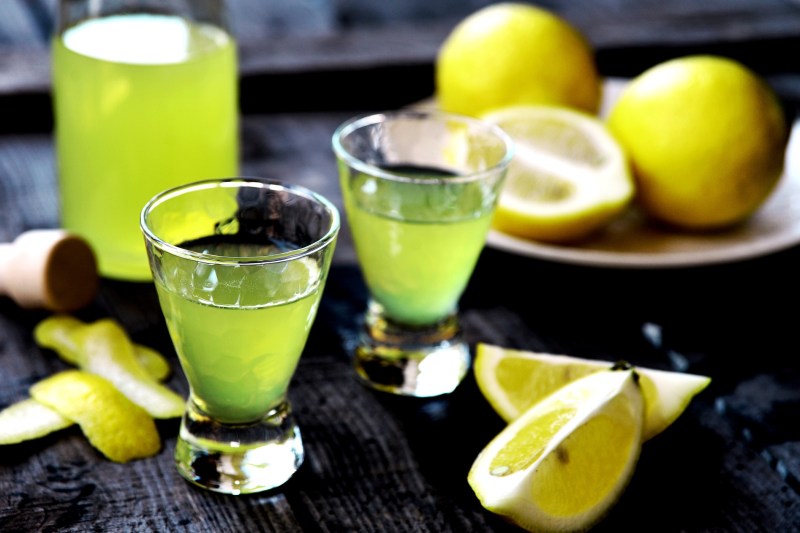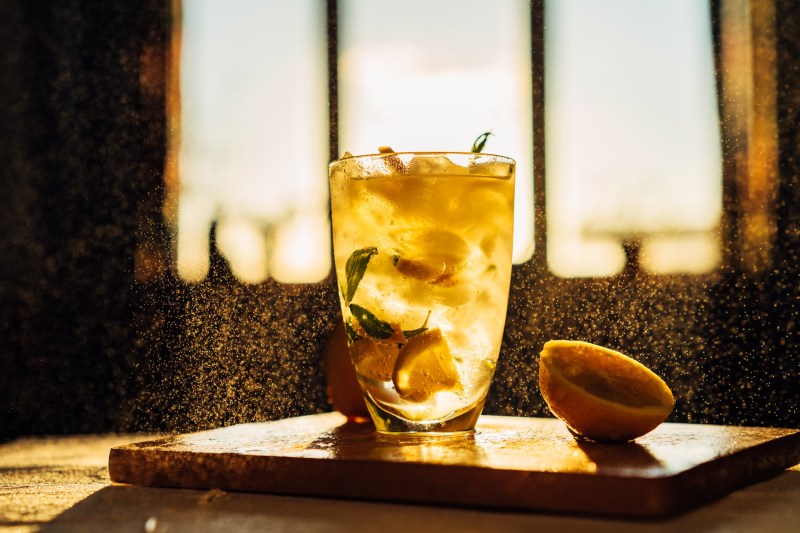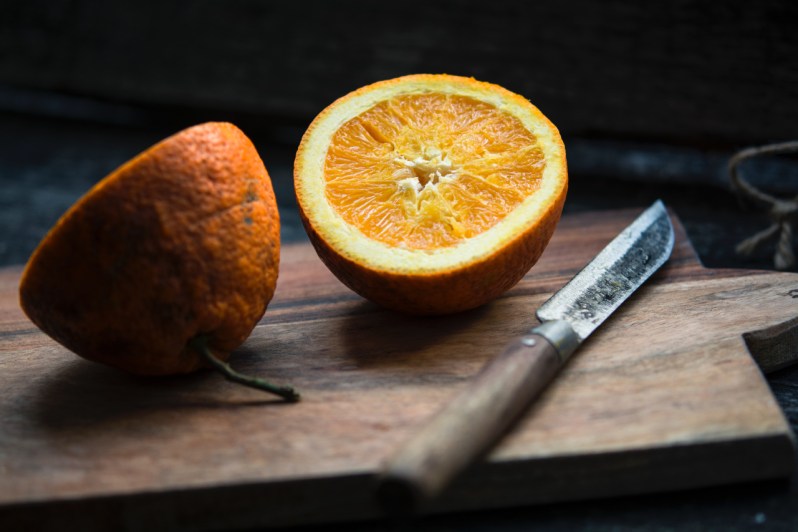
Limoncello is the bright, vibrant yellow liqueur that has become synonymous with sunshine on the Italian Riviera. Crafted from an aged blend of lemons and liquor, this sweet, slightly tart citrus cocktail is considered to be an Italian delicacy that is traditionally served chilled as a “digestive” after dinner or dessert.
Originating in the Campania region of southwestern Italy, limoncello was a common homemade liqueur that has been a part of family traditions and dinner rituals dating as far back as the turn of the 20th century.
Made popular in the late 1980s, limoncello is now widely produced across both Italy and France, using a variety of citrus and liquor bases. However, a ‘true’ limoncello is made from the superior sfusato lemons, which are unique to the Amalfi Coast. Organically grown in the rich volcanic soil and sun-soaked limestone Sorrento cliffs, sfusato lemons are prized for their large grapefruit size, thick oily peels, intense lemon fragrance, and high levels of vitamin C.
In Italy, lemons grown in designated regions of Capri and the Sorrentine peninsula are legally protected, so a true Almafi Limoncello will be denoted with an ‘IGP’ Certification (Indicazione Geografico Protetta) which is used to guarantee the product’s provenance and authenticity.

The most important details when making limoncello
As with most Italian cuisine, limoncello is created from a handful of fresh ingredients with a traditional method passed down over time. The process of turning lemons into limoncello is relatively simple, with just four components — lemons, alcohol, sugar, and water — and the majority of the work is handled by nature and time.
It begins with a batch of fresh lemons, cleaned and peeled with the pulp and pith removed. The rinds are then added to a batch of pure, high-quality 90% ABV grain alcohol and left to soak in a dark place for a minimum of forty-five days. The longer the lemon peels marinate, the more the oils — and the flavor — are extracted, making for a richer color and more intense citrusy-tasting liqueur. The macerated lemons are then strained and combined with a sugar and water syrup and returned to a container to marinate for at least another thirty days or longer until ready to be filtered, bottled, and served.
Depending on the number of peels, amount of sugar, and marinating time, each bottle of limoncello will vary in color and taste, but the end result should be a smooth pouring, sweet and sour tasting, yellow-hued brew.

How to make limoncello at home
What you’ll need to make limoncello:
- 10 organic lemons, washed and dried
- 1 750-ml bottle vodka (100 proof preferred, or 80 proof)
- 1 to 4 cups sugar, to taste
- 1 cup of water, more as needed
Equipment needed to make limoncello:
- Vegetable peeler (or microplane or zester)
- Paring knife
- 1-quart jar or another similar-sized container with a lid
- Strainer
- Large coffee filter
- 4-cup measuring cup
- Small funnel
- 2 clean 16-ounce bottles or several bottles equaling a similar volume
Steps to make limoncello:
- Peel the lemons: Use a vegetable peeler to remove the peels from all the lemons. Try to remove only the outer yellow skin and as little of the pith as possible. Trim away any large pieces of pith with a paring knife, but don’t worry about trimming every last scrap.
- Cover the peels with the vodka: Transfer the lemon peels to a 1-quart jar and cover with vodka. Screw on the lid.
- Infuse the vodka: Let the vodka and lemon peels infuse somewhere out of the way and out of direct sunlight for at least 4 days or as long as a month. The longer you let the vodka infuse, the more lemony your limoncello.
- Strain the vodka: Line a strainer with a large coffee filter and set it over a 4-cup measuring cup. Strain the infused vodka through the filter. You may need to stir the vodka in the strainer if the flow stops.
- Prepare sugar syrup: Prepare a sugar syrup of at least 1 cup of water and 1 cup of sugar — bring the water to a simmer and stir in the sugar to dissolve; allow to cool. You can play with the ratios of water to sugar. Start with 1 cup of water and 1 cup of sugar, taste the limoncello, and add additional sugar syrup gradually until you reach a flavor you like — up to 4 cups of water with 4 cups of sugar. More water will dilute the alcohol base, making a less alcoholic, milder, and smoother-sipping liqueur. More sugar will make a sweeter limoncello.
- Mix the sugar syrup with the infused vodka: Pour the sugar syrup into the infused vodka. Stir gently to mix. Taste and add additional sugar syrup if desired (see above).
- Bottle the limoncello: Insert the funnel in the neck of one of the bottles and fill it with limoncello. Repeat with the remaining bottles.
- Chill and store: Chill the limoncello in the fridge or freezer for at least 4 hours before drinking. Limoncello can be kept in the fridge for up to a month or the freezer for up to a year (and often much longer!)
- Other liqueurs to explore
There are a variety of fruits and nuts that can be made into “cello” liqueurs by using the same general process as the lemon-based original. Some of the most popular adaptations are:
- Arancello: Orange peel liqueur
- Fragoncello: Strawberry liqueur
- Meloncello: Melon liqueur
- Nocino: Liqueur made with green walnuts
- Pistachiocello: Pistachio nut liqueur

What is a liqueur?
A liqueur is a sweet, flavored alcoholic beverage made by blending distilled spirits (like vodka, brandy, or rum) with fruits, herbs, spices, and sugar. The base spirit is most commonly a neutral spirit like vodka, but it can also be made with brandy, whiskey, rum, or other types of liquor. The flavoring is where liqueurs get their character. They can be infused with a wide variety of ingredients, including:
- Fruits: Citrus fruits like orange and lemon, berries, cherries, and apricots
- Herbs and spices: Mint, vanilla, ginger, cinnamon, and anise
- Nuts and seeds: Almonds, hazelnuts, coffee beans, and cocoa
- Other ingredients: Flowers like rose or lavender
- Sweetener: Sugar is most common, but honey, syrups, or other sweeteners can also be used.



